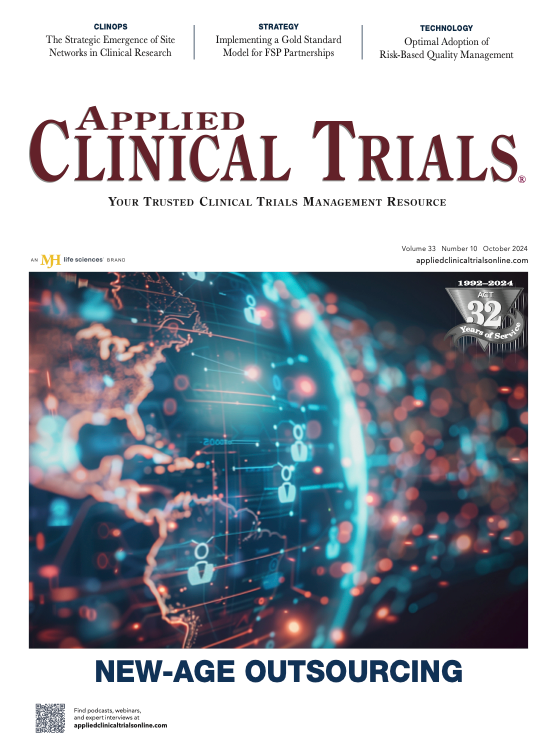The Evolution of Real-World Evidence: Moving Beyond Claims Data in Clinical Trials
Industry is turning to enhanced data collection methods in response to high demands for efficiency and profitability.

The pharmaceutical industry is facing a challenging landscape where the cost of bringing new drugs to market is rising and the return on investment (ROI) is sharply declining. Recent data shows that the average cost of drug development has surpassed $2 billion, with a concerning 62% drop in ROI, marking the lowest point since tracking began. Escalating costs and diminishing returns present a significant obstacle to sustained innovation in the pharmaceutical sector.
In response to these challenges, life sciences companies are increasingly turning to real-world data (RWD) and real-world evidence (RWE) to find efficiencies, increase profitability, and fast-track therapies to the right patients. Traditionally, claims data has been the backbone of this effort, providing insights into treatment choices over time. However, in today’s fiercely competitive environment, claims data alone is no longer sufficient. To gain a competitive advantage, companies must leverage the full potential of RWD, particularly data derived from electronic health records (EHRs).
The limitations of claims data
Historically, medical and pharmacy claims data has been the primary resource for informing clinical trial design and patient recruitment. However, claims data has significant limitations that can hinder the trial process.
First, claims data is often delayed. It can take up to six months to access certain claims data, impeding real-time decision-making, which is crucial for efficient drug development. Additionally, claims data lacks clinical context. It focuses on billing and reimbursement, missing key details such as patient symptoms, disease progression, comorbidities, and treatment outcomes—key elements that are essential for robust clinical trial design and execution.
Moreover, some claims data only captures what happens during billed and reimbursed healthcare services. They can also leave out pre-diagnosis and post-treatment details. These gaps make it challenging to identify the right patients that fit a trials’ inclusion and exclusion criteria. For clinical trials, this can cause delays, resulting in higher costs and longer timelines. While claims data can offer some insights into real-world usage, it often falls short of capturing the full picture of how and why therapies were chosen and their subsequent outcomes.
The power of electronic health records
To overcome these limitations, life sciences companies are increasingly turning to EHRs as a richer source of RWD. EHRs offer a comprehensive view of a patient’s medical history, which can be found in structured data (e.g., demographics, encounter details, and condition specifics). But the real value lies in the wealth of unstructured data found in clinical notes, which provide deeper insights into patient experiences and outcomes. This is particularly valuable for clinical trials, where understanding the nuances of patient conditions make it easier to identify the right patients and meet recruitment timelines.
Clinician notes include detailed descriptions of symptoms, clinical reasoning behind diagnoses, or even diagnoses and procedures that are outside of a simple medical ICD code, such as ICD-10, as well as treatment decisions and patient-reported outcomes. This data offers a more nuanced understanding of a patient’s condition and the effectiveness of therapies in real-world settings.
Making sense of unstructured data
The challenge, however, has been extracting meaningful insights from this unstructured data. Traditionally, this required labor-intensive manual searches, which were time-consuming and lacked scalability. The advent of artificial intelligence (AI) and machine learning (ML) has revolutionized this process. AI and ML algorithms can continuously monitor and analyze vast amounts of patient data, extracting vital information from clinician notes to provide valuable insights into disease progression, treatment, and outcomes.
AI also enables the development of data-driven taxonomies that identify keywords and language patterns associated with specific clinical cues. These curated datasets create a framework for understanding diseases, treatment approaches, and longitudinal outcomes, allowing for more informed decision-making in healthcare.
One example of this in action involved a pharmaceutical company facing the challenge of identifying trial sites for a condition without a specific ICD code—chronic induced corneal pain (CICP). By leveraging RWD from a specialized medical registry, the company identified seven new trial sites with high volumes of CICP patients. Four of these sites passed screening, and one became one of the top-performing study sites. This approach not only accelerated the trial process but also ensured that the right patient population was targeted, demonstrating the power of comprehensive RWE in overcoming complex clinical challenges.
The transformative potential of real-world evidence
The ability to leverage RWE effectively has the potential to unlock significant financial impact for pharmaceutical companies. Industry leaders estimate that by integrating RWE into the value chain—informing research decisions, supporting market access, sharpening product strategies, improving pharmacovigilance, and enabling adherence—pharmaceutical companies could unlock upwards of $300 million annually within the next three to five years.
The implications of this shift are profound. By tapping into the rich insights offered by EHRs, life sciences companies can not only improve the efficiency of drug development, but also enhance patient care. As the industry continues to evolve, embracing comprehensive and dynamic data strategies will be essential for overcoming the challenges of today’s pharmaceutical landscape.
Sujay Jadhav, Verana Health CEO

Unifying Industry to Better Understand GCP Guidance
May 7th 2025In this episode of the Applied Clinical Trials Podcast, David Nickerson, head of clinical quality management at EMD Serono; and Arlene Lee, director of product management, data quality & risk management solutions at Medidata, discuss the newest ICH E6(R3) GCP guidelines as well as how TransCelerate and ACRO have partnered to help stakeholders better acclimate to these guidelines.
Beyond the Molecule: How Human-Centered Design Unlocks AI's Promise in Pharma
June 23rd 2025How human-centered AI that is focused on customer, user, and employee experience can drive real transformation in clinical trials and beyond by aligning intelligent technologies with the people who use them.